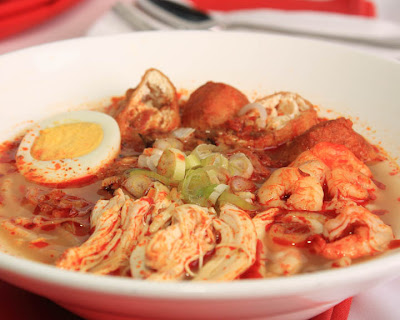Anda pernah tiba-tiba daya ingat menurun, atau tubuh merasa lelah? Kalau ya, boleh jadi tubuh Anda sedang kekurangan cairan alias dehidrasi.
Dua pakar peneliti dari AS, Lawrence E. Armstrong, PhD (pakar hidrasi) dan Harris R. Lieberman, PhD (pakar neuro-cognition) pernah melakukan pemelitian terhadap 26 pria dan 25 wanita sehat. Masing-masing diuji coba dengan latihan fisik dengan treadmill untuk berlari. Mereka menghitung, apakah ada perubahan ketika mereka mengalami penurunan cairan tubuh. Hasil penelitian tersebut menunjukkan bahwa dehidrasi dapat berdampak negatif pada tingkat kinerja, kognitif dan mood.
Penelitian yang dilakukan dalam kurun waktu 2007 – 2009 itu menemukan ternyata perempuan lebih rentan terkena dehidrasi. Kekurangan air di tingkat 1,3 persen saja sudah mengalami banyak perubahan negatif. Hal ini ditandai dengan mudah bingung, lelah, gampang marah dan tersinggung, kurang konsentrasi, serta sakit kepala. Sementara untuk kaum pria, dampak dehidrasi terasa saat berkurang cairan di tingkat 1,5 persen, dengan tanda-tanda menurunnya kewaspadaan dan daya ingat serta mulai terasa capek dan lelah.
Tidak dapat disangkal, air merupakan zat gizi esensial bagi kehidupan. Semua sistem dalam tubuh bergantung pada air. Kurangnya air dalam tubuh dapat menyebabkan dehidrasi, yaitu saat air dalam tubuh tidak mencukupi untuk melakukan fungsi kerja tubuh secara normal. “Air adalah zat gizi yang esensial bagi tubuh, sehingga kehilangan air sebanyak 20% saja bisa berakibat fatal,” kata Dr. dr. Luciana B. Sutanto, MS. SpGK, anggota Perhimpunan Dokter Gizi Medik Indonesia (PGDMI), di Jakarta, 25 Februari 2011.
Selama ini dipercaya bahwa rasa haus merupakan petunjuk bahwa tubuh sedang mengalami dehidrasi. “Ketika muncul rasa haus, harus segera minum. Kalau dibiarkan, tidak timbul rasa haus lagi yang berarti menjadi dehidrasi berat. Tubuh telah gagal dalam mengatasi cairan tubuh sehingga bisa mengakibatkan kesadaran terus menurun,” kata Dr. Luciana.
Jenis-jenis dehidrasi antara lain dehidrasi ringan-sedangdan dehidrasi berat. Ciri-ciridehidrasi ringan-sedang adalah mulut kering dan lengket, mengantuk/lelah, haus, urin sedikit, airmata kurang/kering dan otot lemah, dan sakit kepala/pusing/silau melihat sinar. Sedangkan ciri-ciri dehidrasi berat adalah haus berat, sangat mengantuk dan kebingungan, tidak berkeringat, urin sedikit berwarna kuning gelap/tidak ada urin, mata cekung, menggigil, kulit kering dan elastisitas hilang, tekanan darah rendah, nadi cepat, panas serta kesadaran menurun.
Dari sisi kinerja, mengutip hasil studi Armstrong dan Lieberman, jika kita kekurangan air 0,5%, hal ini akan mengganggu kinerja jantung; kekurangan air 1% akan mengurangi stamina tubuh; kekurangan air 3% akan mengurangi ketahanan otot; kekurangan air 4% akan melemahkan kekuatan otot dan kemampuan gerak serta mengakibatkan heat cramp; kekurangan air 5% akan mengakibatkan kelelahan akibat haus, kram, penurunan kemampuan mental; kekurangan air 6% akan mengakibatkan kelelahan fisik, heatstroke dan koma.
Sedangkan dari sisi kognitif, dehidrasi sebesar 1,5% pada pada pria menyebabkan sulit berkonsentrasi dan mengingat, lelah serta tegang. Sementara wanita lebih cepat terkena dampak negatif dehidrasi yaitu ketika terjadi dehidrasi sebesar 1,3% dan menyebabkan lelah, mudah marah, bingung, mengantuk, hilang konsentrasi, pusing dan kesulitan dalam menyelesaikan tugas.
Menurut Dr. Luciana, reaksi terhadap dehidrasi antara pria dan wanita berbeda karena perbedaan fisiologi tubuh pria dan wanita. Wanita memiliki komposisi lemak lebih tinggi sementara pria memiliki komposisi otot yang lebih tinggi. Pada wanita, komponen air memang lebih rendah selain juga dipengaruhi oleh faktor hormonal sehingga lebih sensitif terhadap kekurangan cairan.Selain itu, hasil studi tersebut juga memaparkan dampak dehidrasi pada suasana hati misalnya orang yang mengalami dehidrasi akan merasa stres, depresi atau tegang.
Di dalam Pedoman Umum Gizi Seimbang disebutkan bahwa orang dewasa (di Indonesia) disarankan untuk minum minimal 2 liter atau 8 gelas air setiap hari untuk memenuhi kebutuhan cairan tubuh serta untuk menjaga kesehatan. “Yang paling baik untuk dehidrasi adalah air putih karena mengandung berbagai mineral yang diperlukan oleh tubuh,” kata Dr. Luciana.























